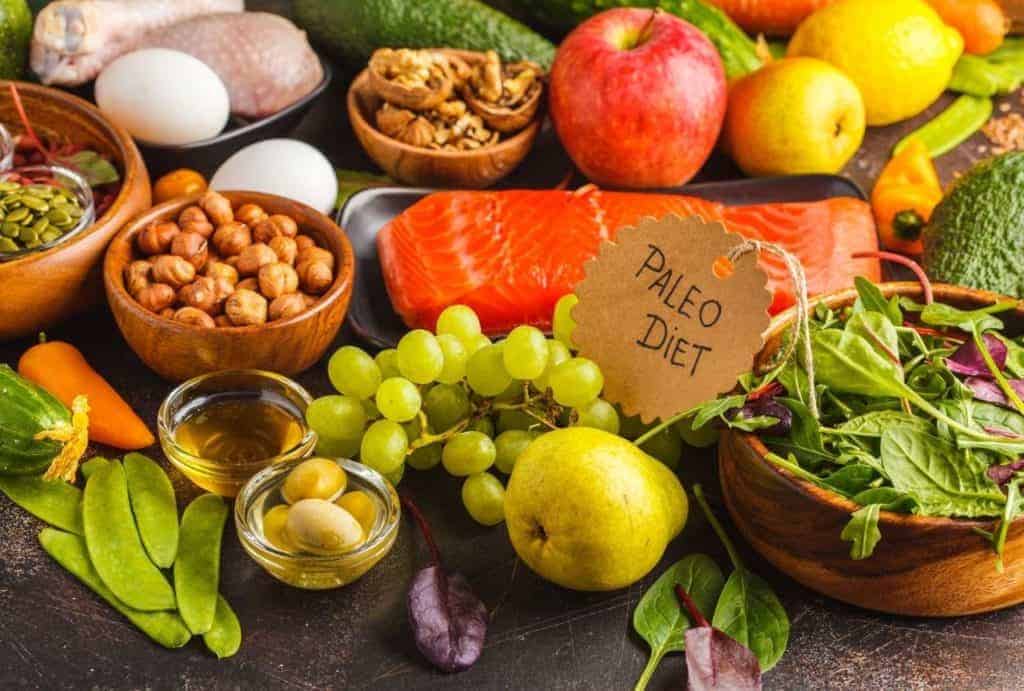Looking for straight facts about Paleo diet risks? While popular for weight loss, the Paleo approach has significant downsides often overshadowed by marketing hype.
Here’s what you need to know before trying it.

Key Takeaways
- Nutritional Gaps: Eliminating grains, legumes and dairy creates deficiencies in fiber, calcium, and B vitamins
- Weight Loss Reality: Results come from calorie reduction, not any special metabolic advantage
- Health Concerns: High protein intake may stress kidneys; some versions encourage excessive saturated fat
- Sustainability Challenge: Most people abandon Paleo within months due to cost, preparation time, and social limitations
- Scientific Questions: Archaeological evidence contradicts the diet’s evolutionary premises
- Better Approach: Modified versions that include some whole grains and legumes offer better nutritional balance
The Real Risks

Nutritional Deficiencies
The Paleo diet eliminates entire food groups, including dairy, grains, and legumes, which are rich sources of essential nutrients.
This exclusion can lead to deficiencies in:
- Fiber Shortage: Without grains and legumes, most Paleo followers consume less than 15g of fiber daily (against the recommended 25-30g), affecting gut health and blood sugar control.
- Calcium Deficit: Research shows women following strict Paleo have significantly lower calcium intake than those on standard dietary guidelines, increasing long-term bone fracture risk.
- B Vitamin Gaps: Whole grains provide essential B vitamins while legumes offer folate—critical nutrients for energy, metabolism, and cell function.
Medical Concerns
- Kidney Strain: The high protein content (often exceeding 30% of calories) can burden kidneys, especially concerning for those with existing kidney issues or family history of kidney disease.
- Cardiovascular Impact: Liberal animal product consumption in some Paleo interpretations can increase saturated fat intake, potentially affecting heart health in susceptible individuals.
- Blood Sugar Management: For diabetics, eliminating all whole grains removes important sources of steady-release carbohydrates that help stabilize blood glucose levels.
Low Energy Levels
The diet’s restriction on carbohydrates can lead to:
- Low-carb flu: Symptoms like fatigue, headaches, brain fog, and irritability as the body adapts to lower carbohydrate intake
- Exercise difficulties: Insufficient carbs may cause muscle breakdown during aerobic activities, reducing physical endurance and energy levels
Difficulty Maintaining Long-Term Adherence
The restrictive nature of the Paleo diet makes it challenging for many individuals to sustain over time.
Factors include:
Limited food variety, which can lead to boredom and cravings
Difficulty eating out or traveling due to strict food restrictions
Increased cost compared to other balanced diets
Practical Challenges
- Cost Barrier: Studies show Paleo costs approximately 10-15% more than conventional eating, creating a financial sustainability issue.
- Preparation Demands: Without convenient staples like grains and legumes, most meals require significant preparation from scratch.
- Social Isolation: Strict Paleo makes dining out, attending gatherings, or holiday meals extremely challenging, fostering an unhealthy relationship with food.
The Science Reality Check

The fundamental Paleo premise faces serious scientific challenges:
- Our ancestors followed diverse diets based on their local environments—there was no single “Paleo diet”
- Modern fruits, vegetables, and animals bear little resemblance to their Paleolithic versions
- Humans have evolved significant digestive adaptations since the Paleolithic era, including the ability to digest starches and dairy
Smart Alternatives
Instead of strict Paleo, consider these evidence-based approaches:
- Mediterranean Diet: Emphasizes vegetables, fruits, whole grains, olive oil, fish, and moderate dairy
- DASH Diet: Developed for hypertension but excellent for sustainable weight loss
- Modified Paleo: Keep the whole foods focus but include nutritious whole grains, legumes, and dairy if tolerated
Maximizing Results, Minimizing Risks
If you still want to try Paleo, these modifications can help:
- Include some legumes: Beans and lentils provide affordable protein, fiber, and nutrients
- Add whole grains: Minimally processed grains support workout energy and provide essential B vitamins
- Consider dairy alternatives: Fortified plant milks can help meet calcium needs
- Prioritize vegetables: Make non-starchy vegetables the foundation of your meals
- Limit saturated fat: Choose lean proteins frequently
- Supplement wisely: Consider calcium, vitamin D, and B-complex supplements
Bottom Line
The Paleo diet’s focus on whole foods and reduced processing has merit, but its strict elimination of entire food groups creates significant nutritional and practical challenges.
Most people find a more balanced approach that incorporates some whole grains, legumes and dairy supports both sustainable weight loss and overall health.
Remember: The most effective diet is one you can actually maintain long-term. Focus on creating a moderate calorie deficit through balanced nutrition rather than eliminating entire food groups.
References:
- https://www.signos.com/blog/paleo-diet-weight-loss
- https://www.diabetes.co.uk/paleo/side-effects-of-paleo-diet.html
- https://magazine.scienceconnected.org/2023/11/paleo-diet-is-dangerous-expert-warns/
- https://www.everydayhealth.com/diet-nutrition/paleo-diet/potential-short-long-term-effects-paleo-diet/
- https://dietitiansaustralia.org.au/health-advice/paleo-diet-plan-healthy
- https://bariatricsurgeryco.org/weight-loss/pros-and-cons-of-the-paleo-diet-for-weight-loss/
- https://health.ucdavis.edu/blog/good-food/paleo-diet-what-it-is-and-why-its-not-for-everyone/2022/04
- https://www.waldeneatingdisorders.com/blog/5-hidden-dangers-of-the-paleo-diet/
- https://www.womenshealthmag.com/weight-loss/a19938337/paleo-diet-side-effects/
- https://www.news-medical.net/health/Paleo-Diet-Pros-and-Cons.aspx
- https://hsph.harvard.edu/news/paleo-diet-health-benefits-complicated/
- https://www.webmd.com/diet/paleo-diet
- https://nutritionsource.hsph.harvard.edu/healthy-weight/diet-reviews/paleo-diet/
- https://www.medicalnewstoday.com/articles/paleo-diet-is-there-any-evidence-that-it-benefits-health
- https://www.healthline.com/nutrition/paleo-diet-side-effects
- https://www.healthline.com/nutrition/paleo-diet-for-weight-loss
- https://www.mayoclinic.org/healthy-lifestyle/nutrition-and-healthy-eating/in-depth/paleo-diet/art-20111182
As a veteran fitness technology innovator and the founder of GearUpToFit.com, Alex Papaioannou stands at the intersection of health science and artificial intelligence. With over a decade of specialized experience in digital wellness solutions, he’s transforming how people approach their fitness journey through data-driven methodologies.
